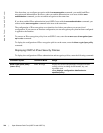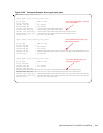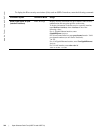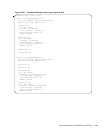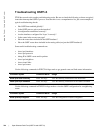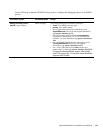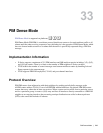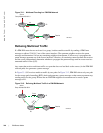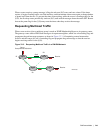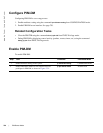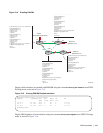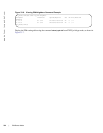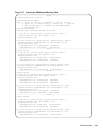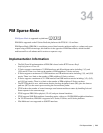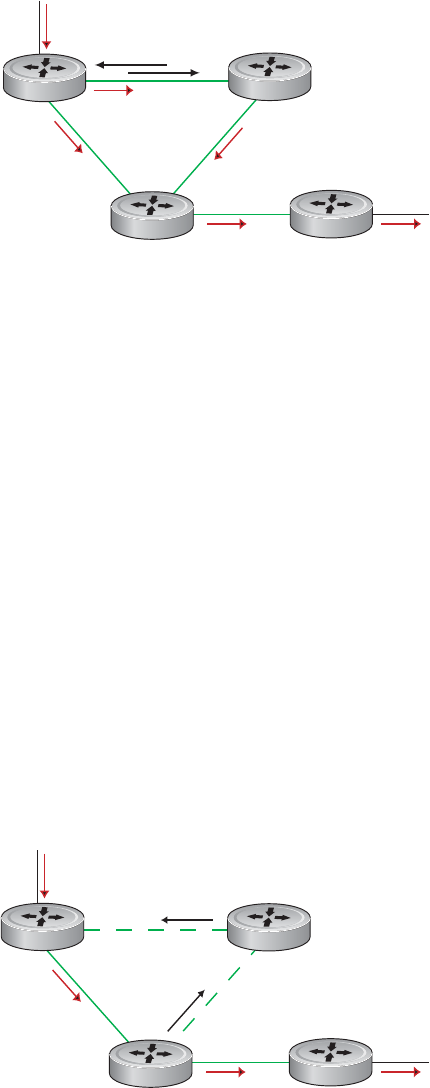
748 | PIM Dense-Mode
www.dell.com | support.dell.com
Figure 33-1. Multicast Flooding in a PIM-DM Network
Refusing Multicast Traffic
If a PIM-DM router has no receivers for a group, it refuses multicast traffic by sending a PIM Prune
message to address 224.0.0.13 out of the source interface. The upstream neighbor receives the prune
message and determines if it has any remaining neighbors downstream. If it does not, it propagates the
prune message upstream out of the source interface. Likewise, all remaining routers between the receiver
and the source independently determine whether to propagate the prune message until no router receives
unwanted traffic for the (S,G).
Any router that receives multicast traffic on a port that does not lead back to the source (via the PIM-DM
selected path) also generates a prune message.
In Figure 33-1, R3 receives multicast traffic by two paths. In Figure 33-2, PIM-DM selects only one path
for the reverse path forwarding (RFP) check and generates a prune message so that routers upstream stop
sending traffic for the group. R2 then has no PIM-DM neighbors downstream and so sends a prune
message to R1.
Figure 33-2. Refusing Multicast Traffic in a PIM-DM Network
Source
Hello
Receiver
PIM-DM 0
01
R1
R2
R3
R4
G
roup Address: 239.192.0.1
Adjacency
PIM-DM 0
02
Prune
Source
Receiver
R1
R2
R3
R4
G
roup Address: 239.192.0.1
Prune



